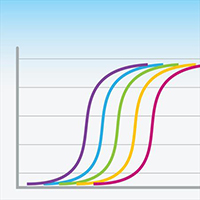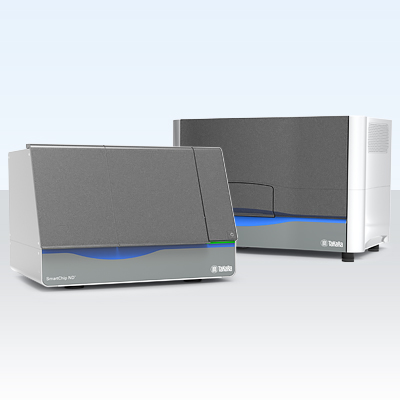Real-time, or quantitative, PCR (qPCR) is a powerful and common technique for accurate analysis of gene expression. Our dye-based qPCR kits utilize our proprietary TB Green intercalating dye. This versatile dye can be used with standard methods and equipment with no need for protocol modifications. Green intercalating dye-based qPCR works by the dye binding to double-stranded DNA, which is produced during each PCR cycle. When deciding whether to do probe-based qPCR or intercalating dye-based qPCR, it is important to consider the advantages and limitations of each.
In general, dye-based qPCR is best suited for experiments that require quick and straightforward testing of large numbers of samples for gene expression. This method is comparatively inexpensive as it uses standard, unlabeled oligonucleotides for amplification. This makes it an economical, sensitive option that requires comparatively little optimization and is highly compatible with high-throughput screens and other large-scale studies.
However, dye-based qPCR has some limitations. The green dye intercalates into all double-stranded DNA during the PCR steps, causing nonspecific PCR products to fluoresce. While the proportion of specific detection can be assayed by looking for a single, sharp peak in a melt curve analysis, this requires extra hands-on time and may require additional optimization to eliminate nonspecific products. Finally, predesigned dye-based primer sets are more difficult to find than probes, necessitating a do-it-yourself target validation approach.
We offer multiple formats of dye-based qPCR mixes to meet your experimental needs and give you flexibility in your experimental approaches.






